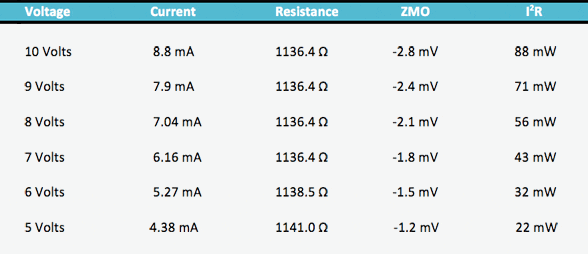Question
I have some Endevco brand pressure transducers (8500 series) that were calibrated at 5 Volts but, the data sheet says that the maximum excitation voltage is 15 Volts. Can I operate these at 10 volts and simply double the sensitivity? Aren't they ratiometric? What about piezoresistive accelerometers?
Answer
The excitation voltage can be changed (increased or decreased) without damage to the transducer as long it is below the maximum specified voltage. There will however, be an error in the reading thus the user should always operate the transducers at the voltage at which they were calibrated. The calibration voltage can be found on the transducer's calibration certificate.
In theory, the transducers are ratiometric but, to be truly ratiometric, the bridge resistance would have to remain constant as the voltage is changed. As voltage is increased, the I2R heating (often referred to as "self heating") of the bridge resistors cause the resistance to decrease resulting is a sensitivity change.
A shift in the zero measurand output voltage (ZMO) will also decrease as excitation voltage is decreased. This decrease is not linear again, due to the I2R heating of the bridge resistor.
As an example, a model 8510B-2K was selected at random and the input voltage was varied between five and 10 volts and the results are shown below.

Endevco brand pressure transducers are temperature compensated over a specified temperature range as a part of the manufacturing process. This part of the process is conducted using a specific excitation voltage, usually 10 volts. Operating at an excitation voltage that is higher than the calibration voltage can upset the temperature compensation. The effect on the calibration accuracy is minimal when operating at a reduced excitation Voltage. It is also clear (see the above table) that the ZMO will also shift as excitation voltage is changed.
So far we have discussed pressure transducers, so how do piezoresistive accelerometers differ? The same rules that apply to pressure transducers apply to accelerometers with the exception of the temperature compensation. Since Endevco piezoresistive accelerometers are designed for sensing short-term events (shock); there is no temperature compensation circuit included.
In summary, both piezoresistive accelerometers and pressure transducers are not truly ratiometric. The user should exercise caution when operating at excitation voltages other than those specified on the calibration certificate.